The best pan and tilt tripod heads in 2025: precise control for your camera
Also called 3-way heads, the best pan and tilt tripod heads offer extra precision over a ball head
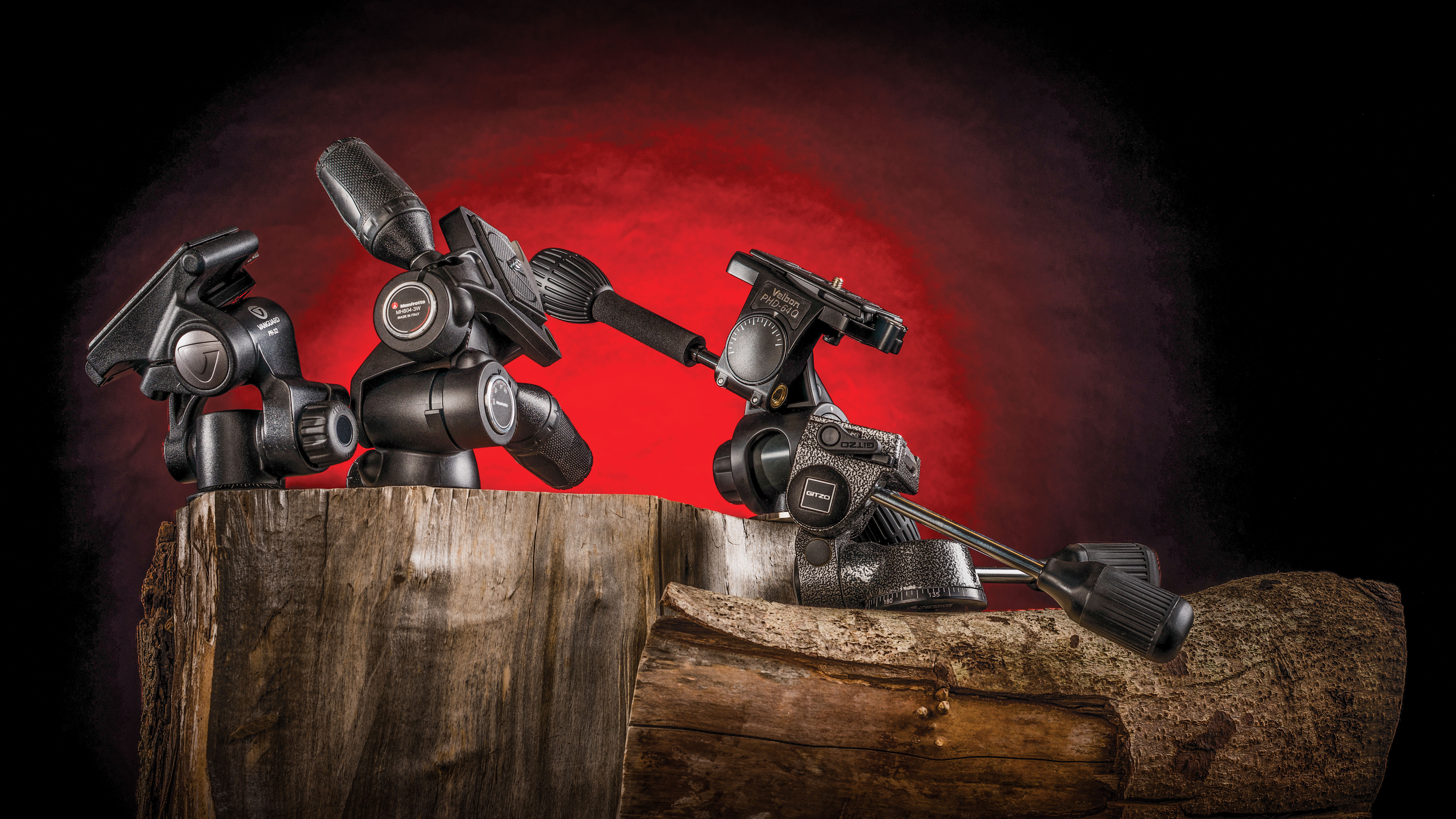
With the best pan and tilt tripod heads, you can exercise a great degree of sophisticated control over your camera while it's mounted to a tripod. These heads are also known as "3-way" heads, due to the fact that they separate horizontal, vertical and panning motions onto three separate axes. If you want to precisely line up your shot to get the perfect vertical horizon line in a landscape, or create a silky-smooth panning effect while shooting video, a pan and tilt head is the way to do it.
Pan and tilt heads aren't as common on the market as standard photography ball heads or fluid video heads. There have been a few fairly recent entries to the market that have caught our attention, like the 3 Legged Thing AirHed Trinity, featured on this list. Otherwise, we've picked out a few of the pan/tilt heads that have impressed our team the most, based on our reviewing and testing experience.
For more options in camera support, we have a general guide to the best ball heads, and a guide to the best tripods if you also need a set of legs. We've answered a few FAQs about pan/tilt heads at the bottom of this guide if you need a primer – otherwise, let's get started and take a look at the best pan and tilt tripod heads to buy right now.
The quick list
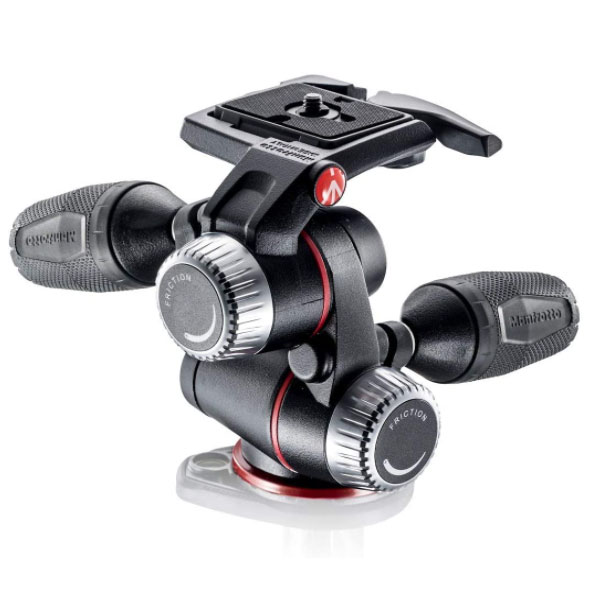
Best overall
Our top choice of pan-and-tilt head, this Manfrotto-made option packs in plenty of innovative features, but keeps the price relatively affordable.
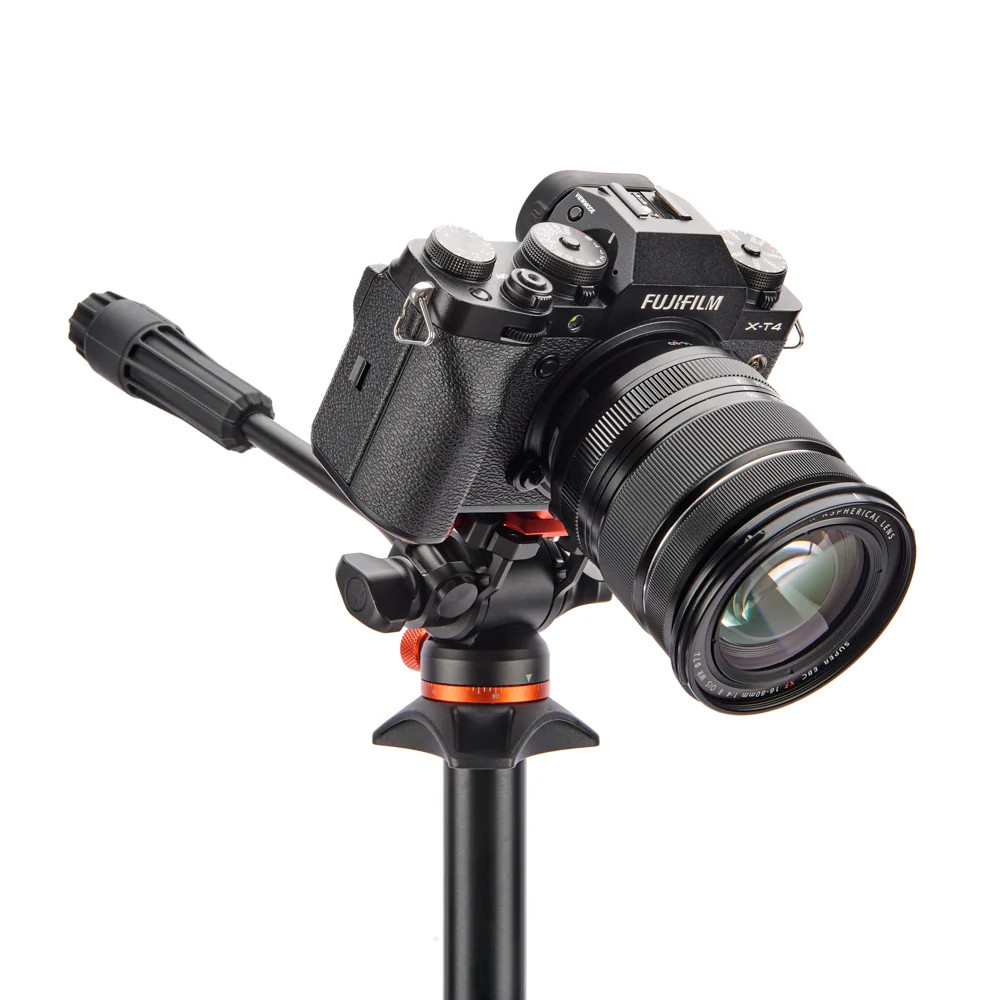
Best for beginners
Lightweight and affordable, but made with 3 Legged Thing's customary well-machined quality, the AirHed Trinity is an ideal choice for amateur shooters.
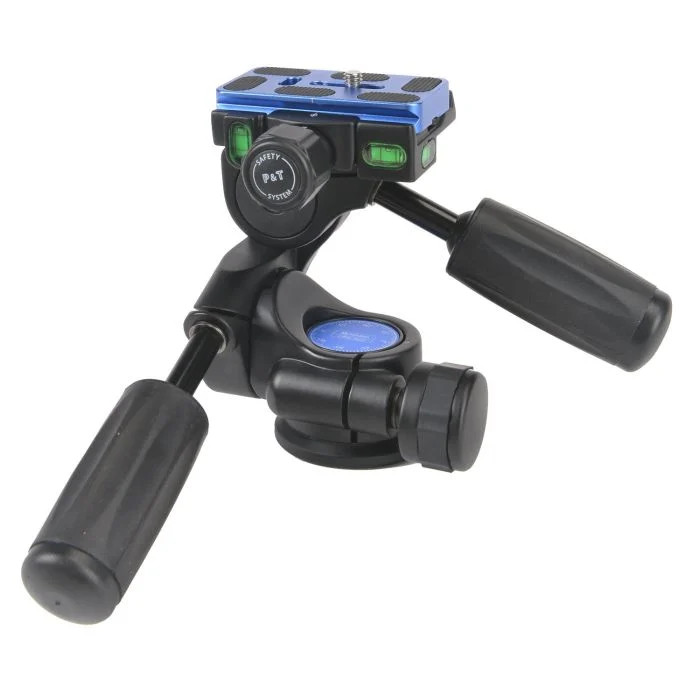
Best for vloggers
Another lightweight option, Benro's HD1A delivers smooth panning and ergonomic handling. There are also larger versions available if you have a heavier setup.
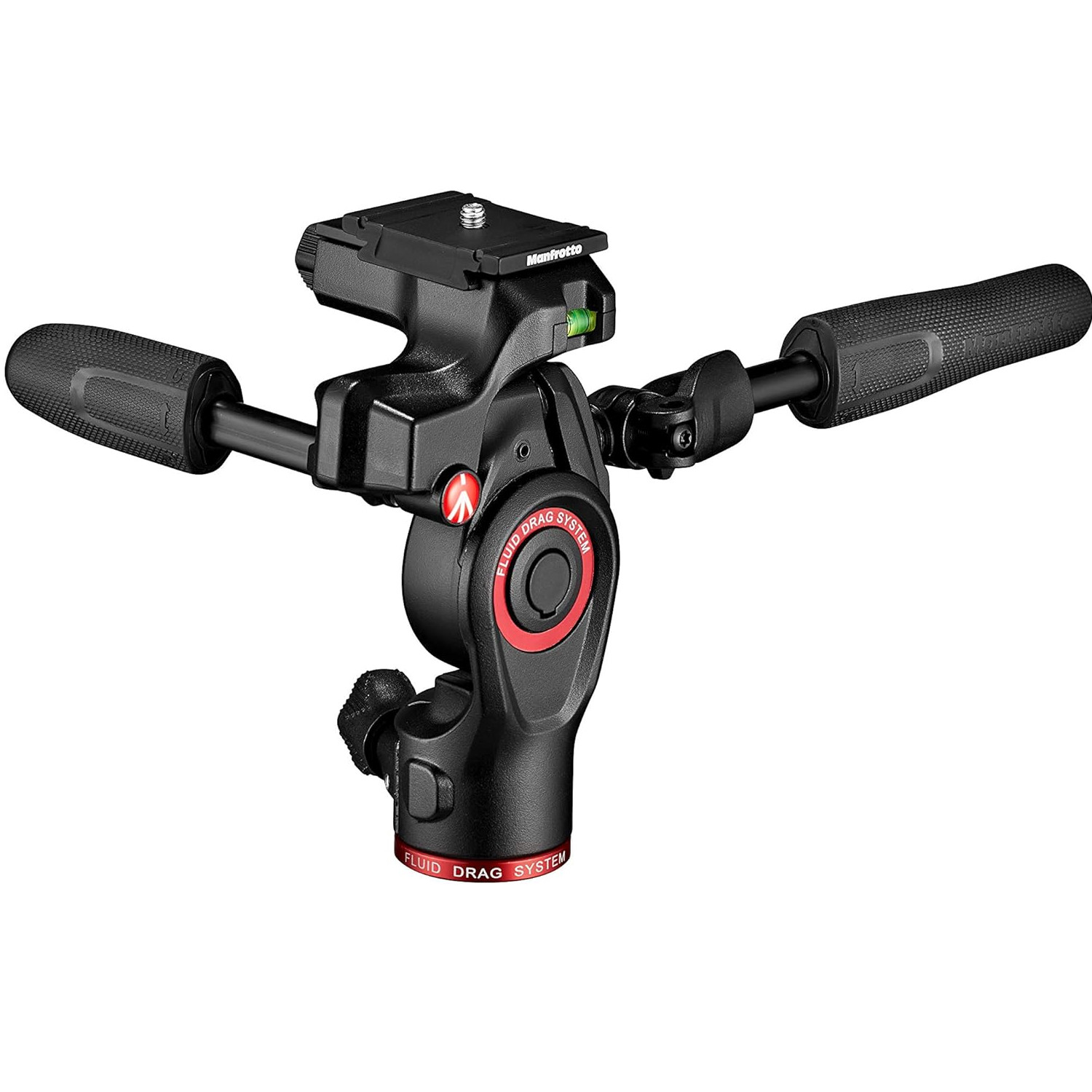
Best for travel
Beautifully made, like the majority of Manfrotto gear, this 3-Way Live Head is an ideal choice for travelling filmmakers and photographers who want something portable.
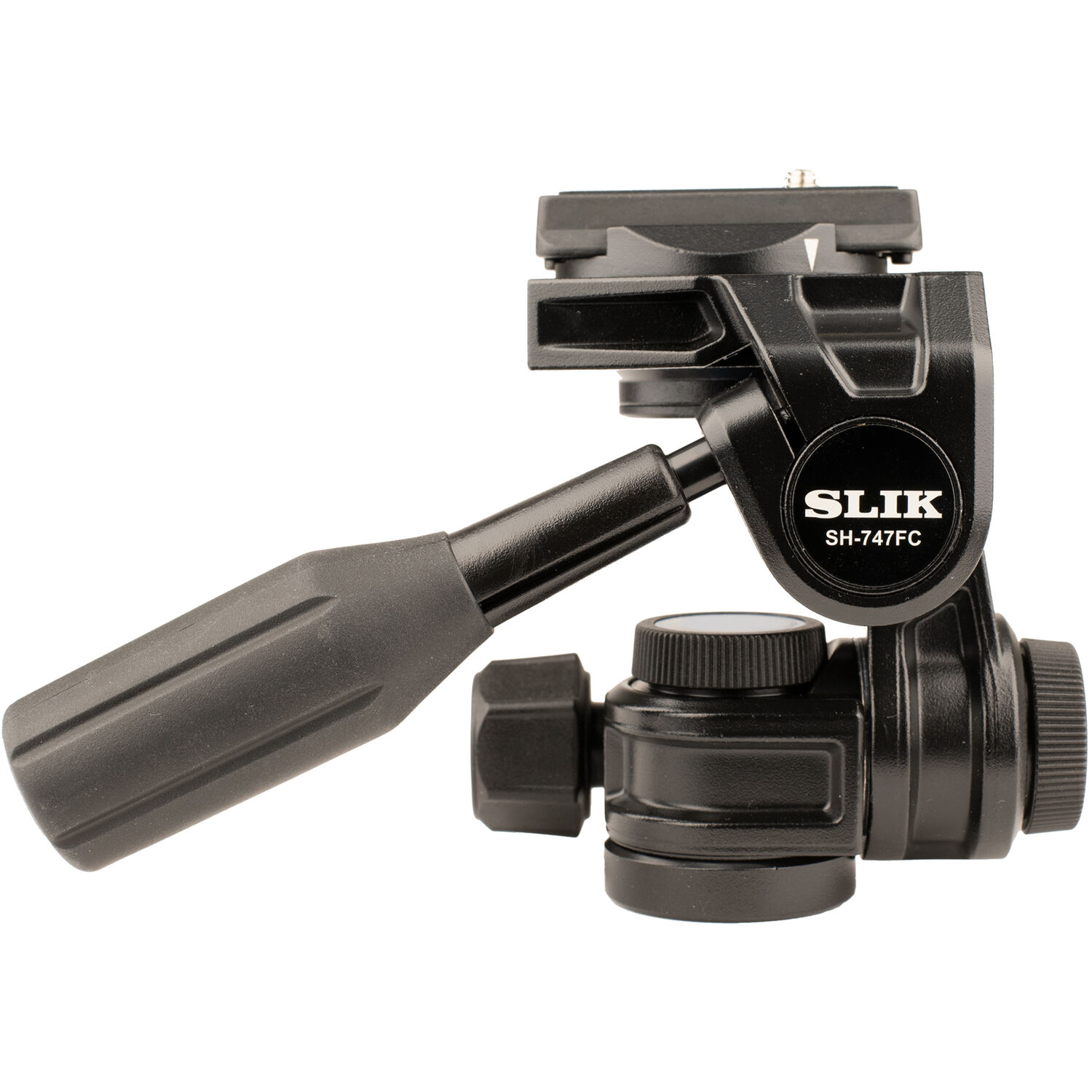
Best friction control
Offering independent 'drag' control on the pan and tilt axes, the Slik SH-747FC is a well-engineered mid-range head for photographers and videographers alike. It also travels well, with a relatively slim profile.
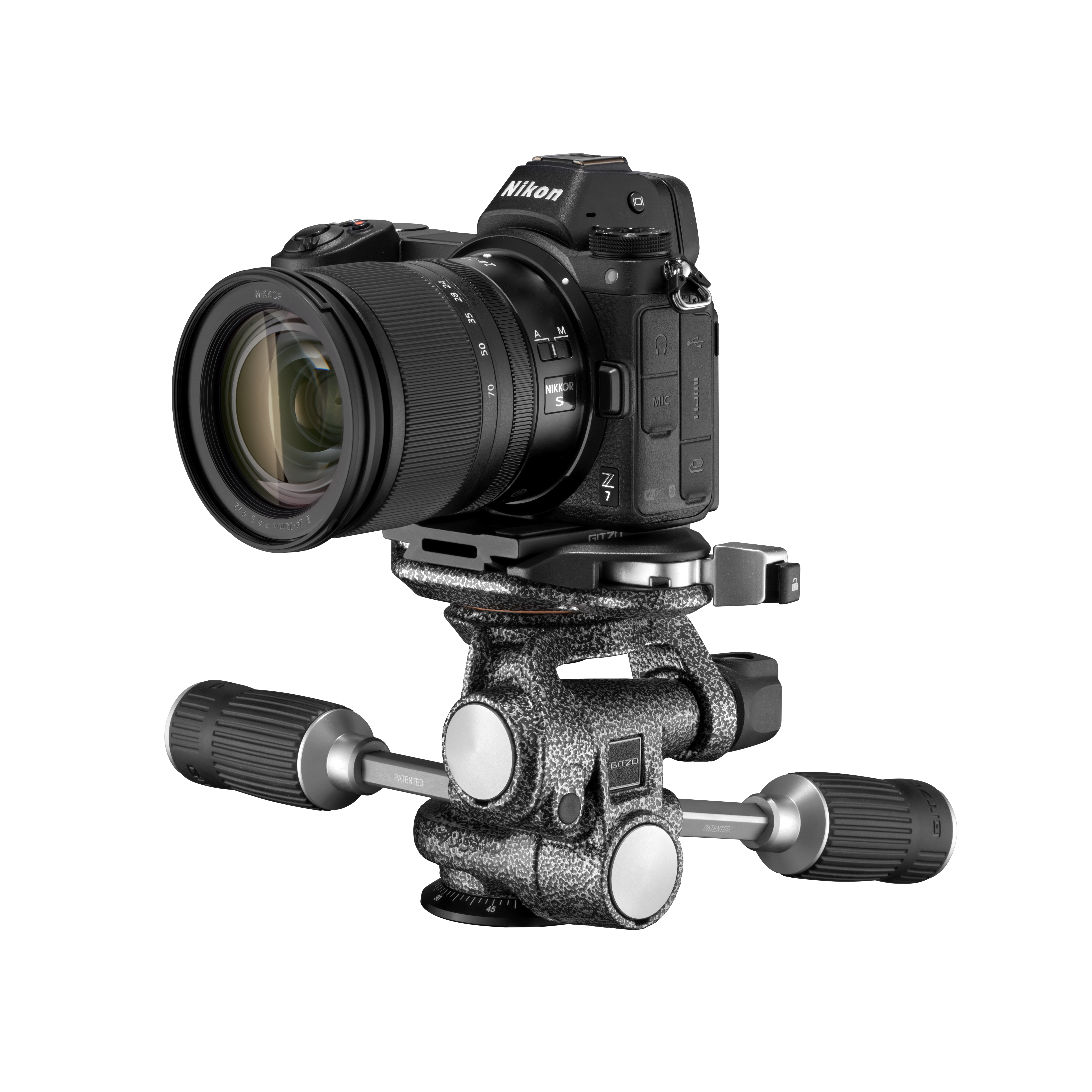
Best for pros
Gitzo's high-end pan and tilt head comes at a higher price, but its uncompromising quality and sublime engineering deliver exceptional smoothness and stability.
See the next products
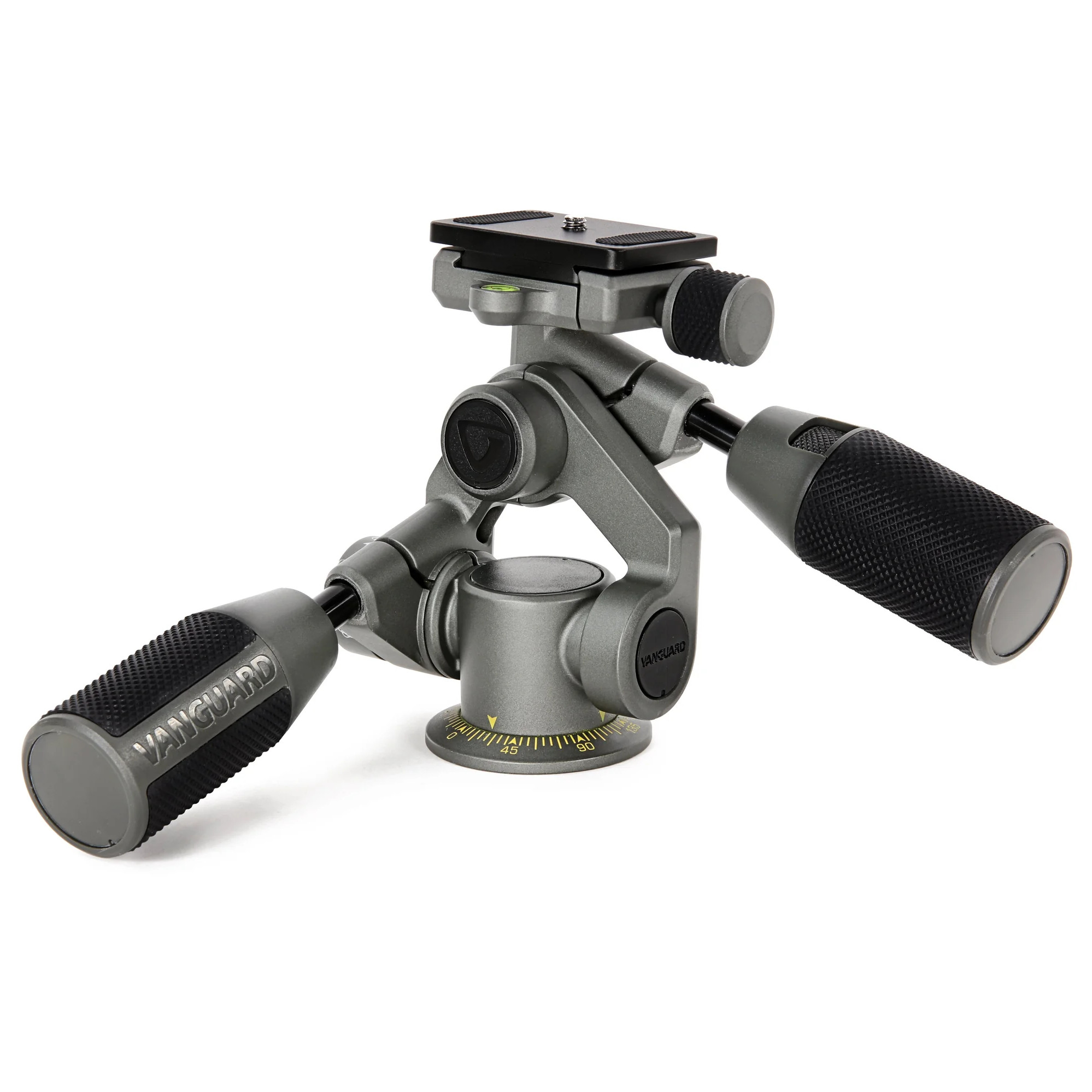
Best Vanguard
Light in weight and fairly light on controls, the Vanguard head is nevertheless a solid option, especially for those using lighter camera setups (such as vloggers).
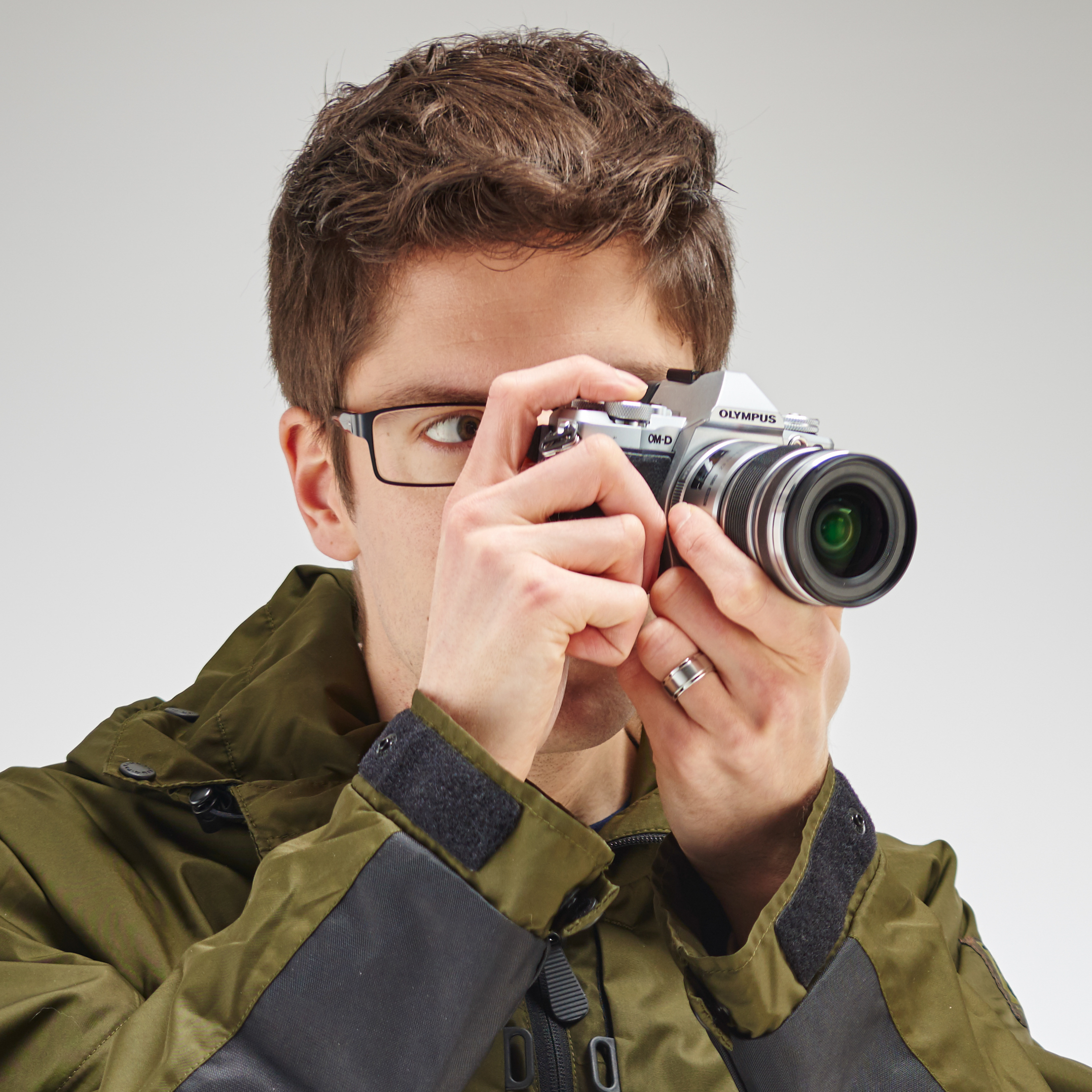
Ben is the Imaging Labs manager, responsible for all the testing on Digital Camera World and across the entire photography portfolio at Future. He's also the team's man-at-arms when it comes to camera bags, filters, memory cards, and all manner of camera accessories – his lab is a bit like the Batcave of photography! Here, he has put his encyclopaedic knowledge to use in selecting the best pan and tilt heads that have passed through his lab.
Best pan and tilt heads to buy
Why you can trust Digital Camera World
Best overall
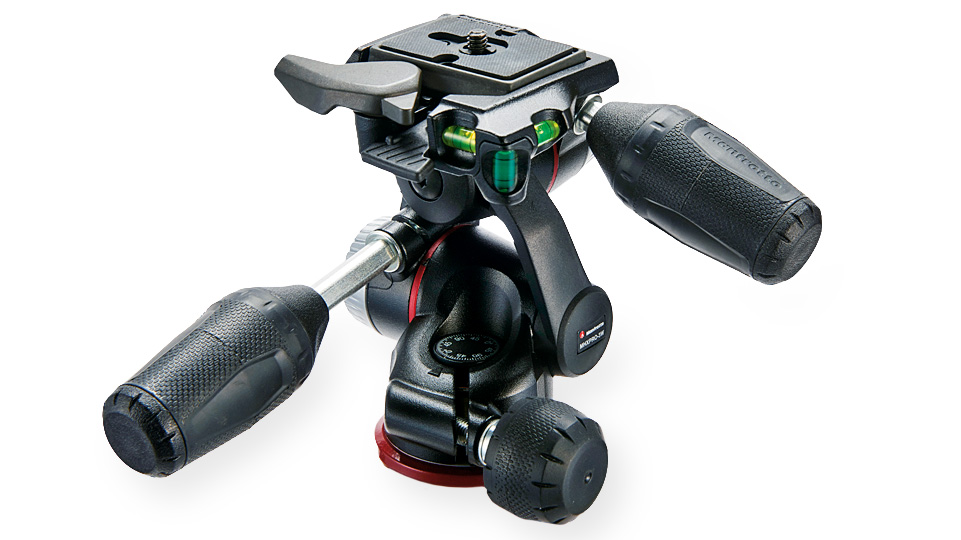
1. Manfrotto X-Pro 3-Way Head
Specifications
Reasons to buy
Reasons to avoid
We’ve long been fans of the X-Pro head, thanks to innovative features like adjustable friction resistance that means you can precisely balance cameras large or small. The adjustment is slow but precise, although the shallow, slippery dials themselves aren’t the easiest to grip, especially in the cold.
Thankfully the three main handles are much grippier and more ergonomic, while the two tilt handles are also retractable. These don’t shrink quite as effectively as the folding handles on Induro's PHQ1 Panhead (below), but they still enable the head to pack into a compact 13.5cm cube. Manfrotto’s push/pull handle retraction is also quicker to use and isn’t prone to loosening over time. The X-Pro’s quick-release camera plate is one of Manfrotto’s proprietary designs so limits interchangeability with other heads, but it attaches and releases very smoothly.
Factor the ergonomic two-lever quick release mount, easily visible triple bubble levels, as well as a reasonable 1kg weight, and the X-Pro is our top pick for a pan and tilt head.
Best for beginners
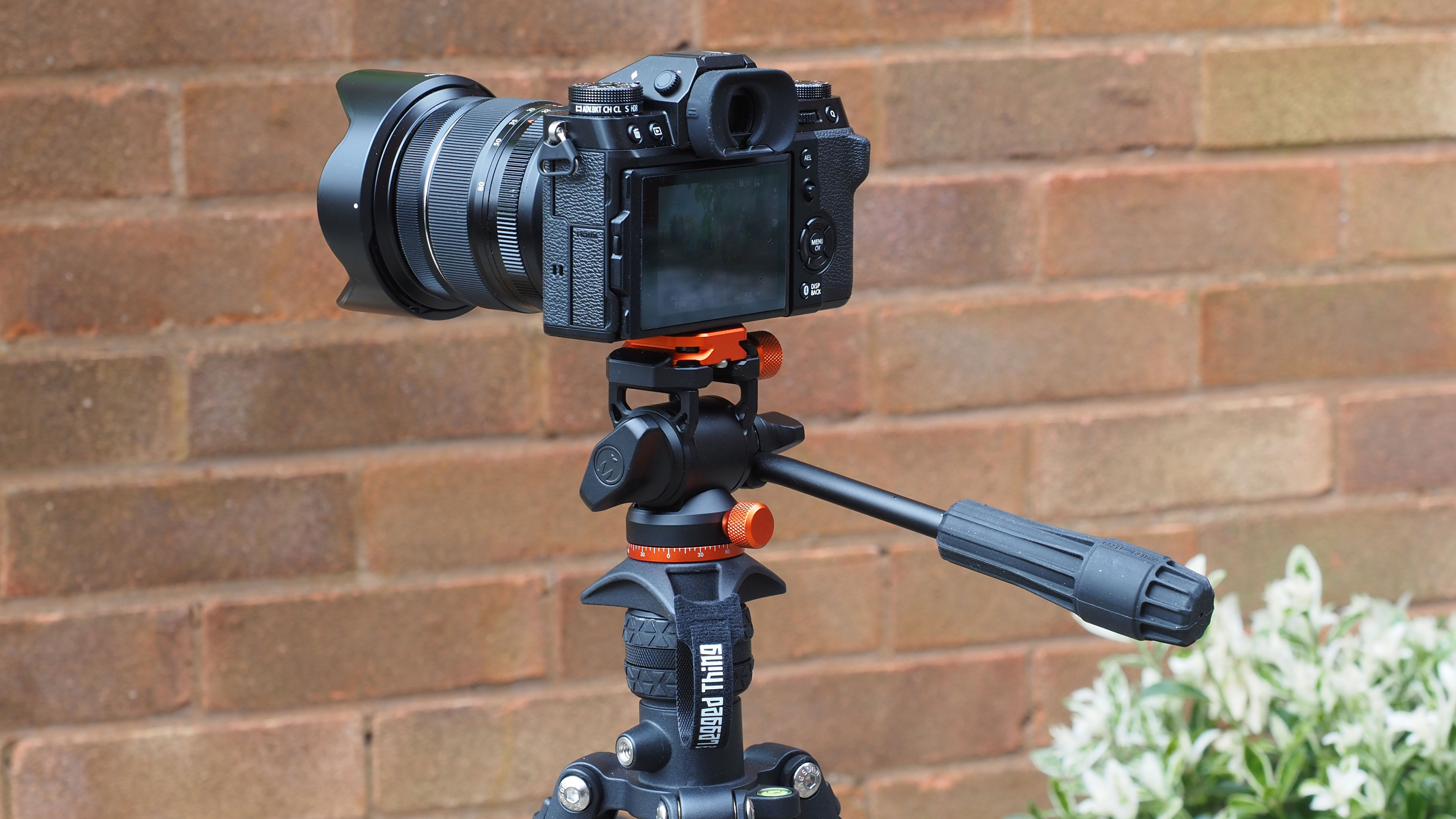
Specifications
Reasons to buy
Reasons to avoid
While it's not quite at the same level as some of the pro heads we'll meet throughout this guide, the lightweight and affordable AirHed Trinity from 3 Legged Thing is the best entry-level choice, and will probably best suit the majority of users. Even though it's a fairly low-cost option, it's still got that smooth operational ‘feel’ that 3 Legged Thing products are known for.
The panning motion, controlled via the detachable handle, feels smooth with just the right amount of 'drag'. The tilt action has a good degree of spring to it, best suiting lightweight vlogging setups rather than heavy-duty cine cameras and lenses. Realistically, with a payload of 5kg, that's what you're going to be using anyway.
One operational quirk is that the AirHed Trinity's tilting motion doesn't support the use of L-brackets, meaning it may be difficult to shoot vertical video on a conventional camera. There are workarounds though, and it ultimately doesn't detract too much from what is a well-engineered and well-price pan and tilt head.
Best for vloggers
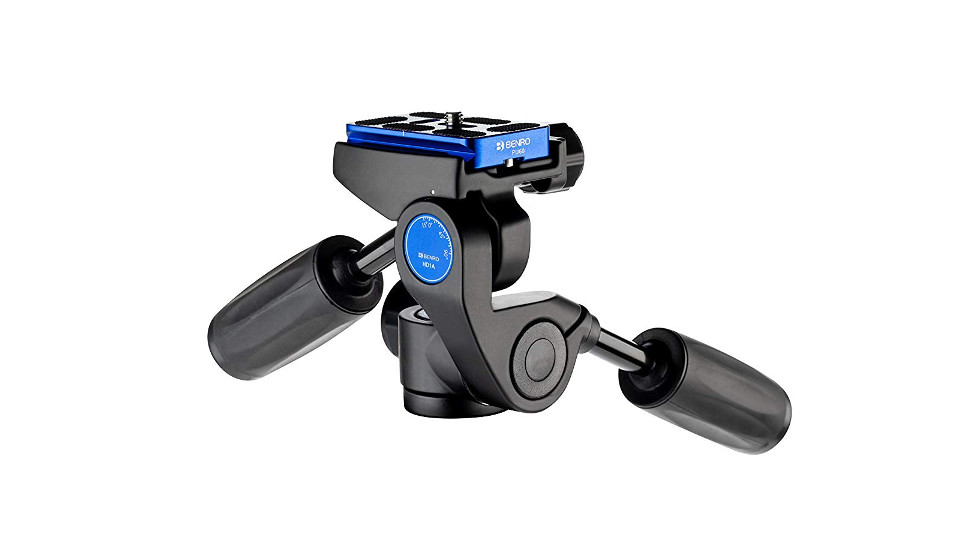
3. Benro HD1A
Specifications
Reasons to buy
Reasons to avoid
Benro's HD1A is a solid example of an unshowy but dependable 3-way head. It gets the job done just as you need it to for setups weighing up to 5kg, and is also Acra-Swiss-compatible for smooth quick-release action. Three bubble levels also allow for precise, accurate camera positioning. Smooth 360-degree panning gives the user real flexibility and opens up loads of shooting opportunities in both stills and videos. Ergonomic handles make the head easy to pick up and transport, though its diminutive size can make some of the control knobs a little fiddly to handle at first.
The HD1A is actually one of a series of three: if the 5kg capacity of this model isn't quite enough to handle your camera setup, then it's also worth considering the HD2A or HD3A, which can support 8kg and 10kg respectively, though are also physically larger and cost more.
Best for travel
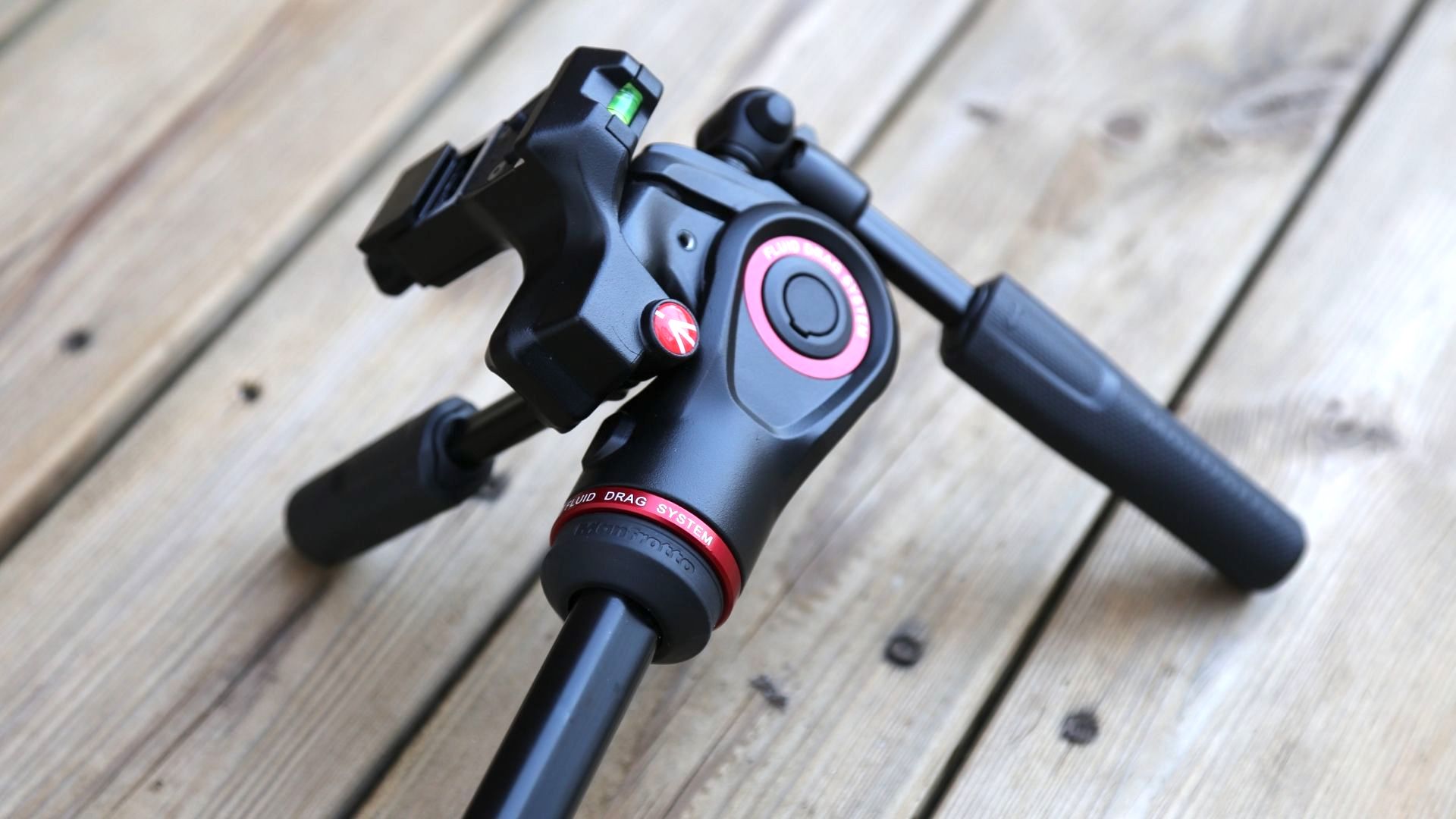
Specifications
Reasons to buy
Reasons to avoid
This pan and tilt head uses a hydraulic damping system to help videographers make the kind of smooth, steady movements that conventional mechanical pan/tilt heads just aren’t built for. The system works well, allowing for small, predictable and consistent movements across all angles, tilts and pans - essential for videography, but the roll axis easily puts it into a valuable portrait mode for stills photography.
The Befree 3-Way Live Head ships with a 200PL-PRO plate but works with all kinds of plates; it’s compatible with Manfrotto RC2 and Arca-Swiss type head attachments.
Downsides? There are a couple of knobs that are a tad plasticky, and one of them can interfere with a DSLR’s battery cover, making it impossible to change a battery without first removing the camera from the tripod.
But these minor quibbles don't really detract from what's otherwise a superbly versatile head that works just as well for shooting stills or video.
Best friction control
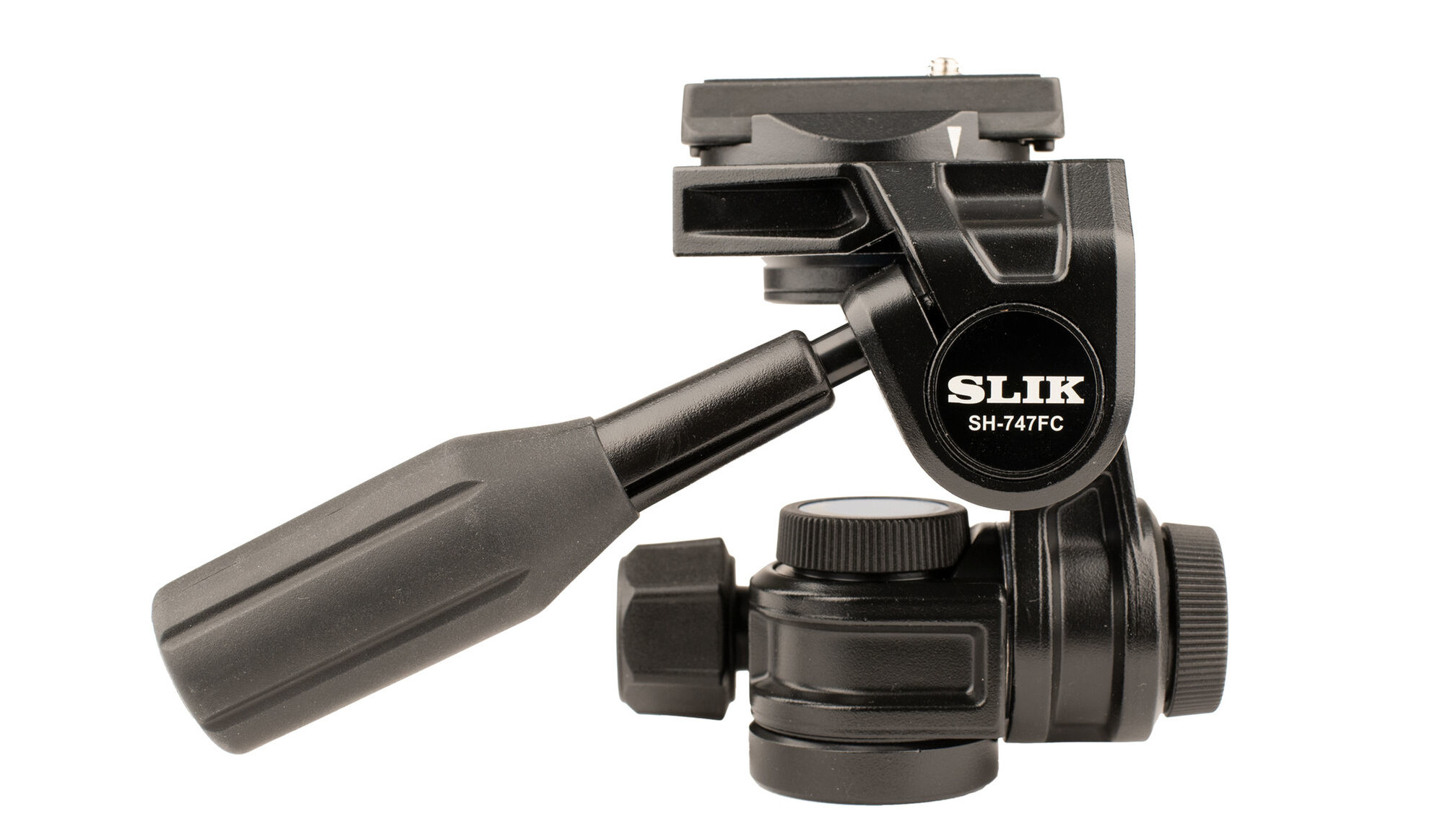
5. Slik SH-747FC
Specifications
Reasons to buy
Reasons to avoid
A 3-way pan/tilt head that's priced firmly in the mid-range, the SLIK SH-747FC is a good choice for stills photographers and videographers alike. It's reasonably lightweight, with a 6.9kg payload that will comfortable accommodate light to mid-weight setups, and it packs down nicely for travel. The Dual-Stage Arca-type compatible quick release platform offers two configurations – a side-to-side QR placement that's well-suited to stills cameras, and a front-to-back placement that's common on video cameras.
This is also the slightly upgraded version of the vanilla SLIK SH-747, which adds Friction Control capability. Also appearing on some of the other heads on our list, this system provides independent dials for the pan and tilt functions, allowing the user to set the resistance (or 'drag') of the movement to their preferred level. This makes it much easier for individual users to achieve smooth panning movements, whether they're filming or capturing panning photographs.
Best for pros
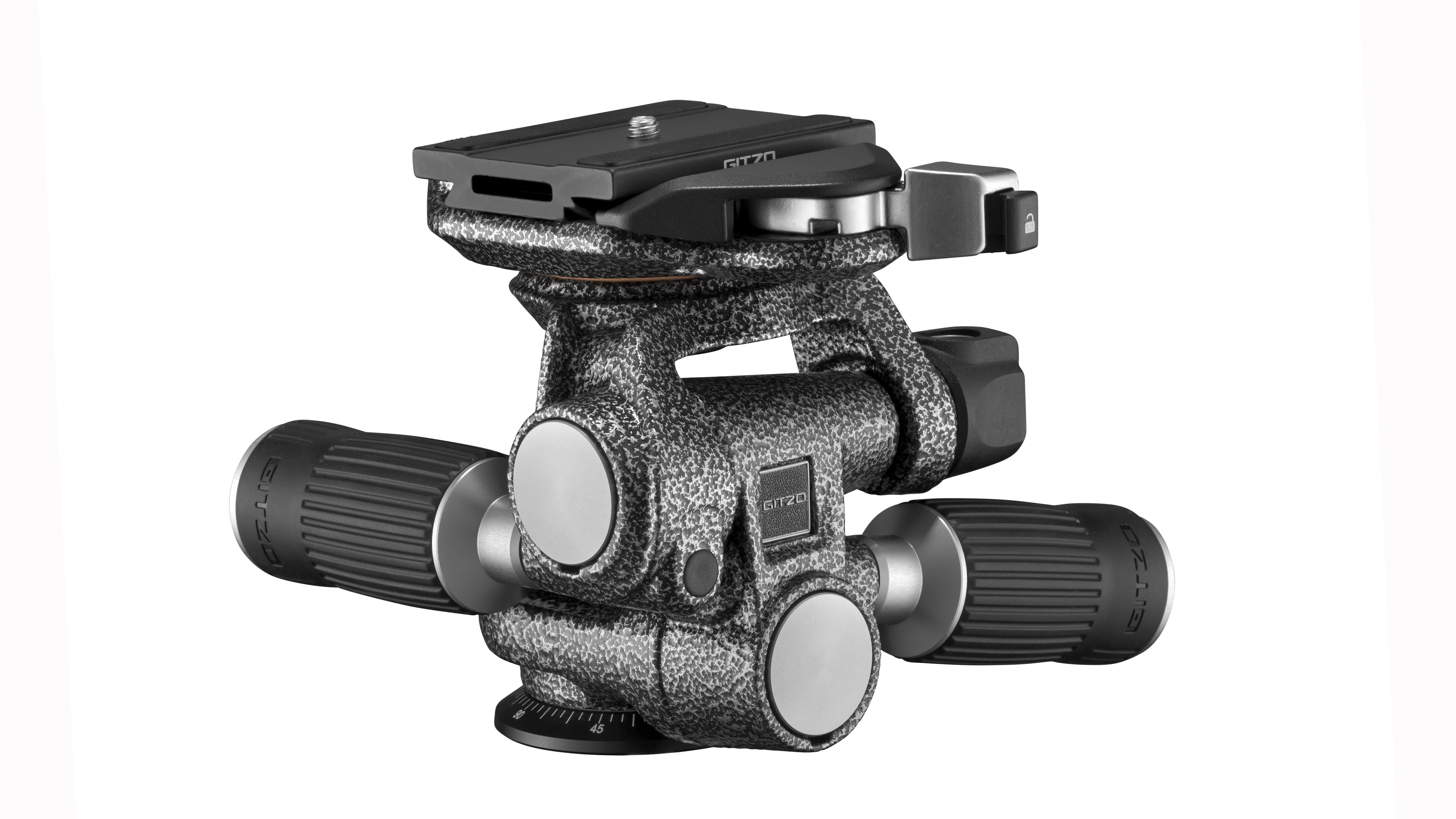
6. Gitzo 3-way Fluid Head GHF3W
Specifications
Reasons to buy
Reasons to avoid
The Gitzo 3-way Fluid Head GHF3W borrows engineering features found in sister brand Manfrotto's X-Pro 3-Way Head, but thanks to aluminum and magnesium construction, it's a shade lighter at 955g, yet supports even heavier camera gear - 13kg, versus the X-Pro's 8kg payload.
You get similar retractable tilt handles for a more compact folded profile, plus the addition of a twisting bubble level that allows you to check for both vertical and horizontal alignment simply by rotating the level upwards after you've tilted your camera into portrait orientation.
The head comes with a 7cm rubberized Arca-Swiss type plate, and the quick release holder can be rotated through 90° (essentially giving you a fourth controllable movement. This helps you switch from portrait to landscape, and makes it easier to shoot overhead and below.
Best Vanguard
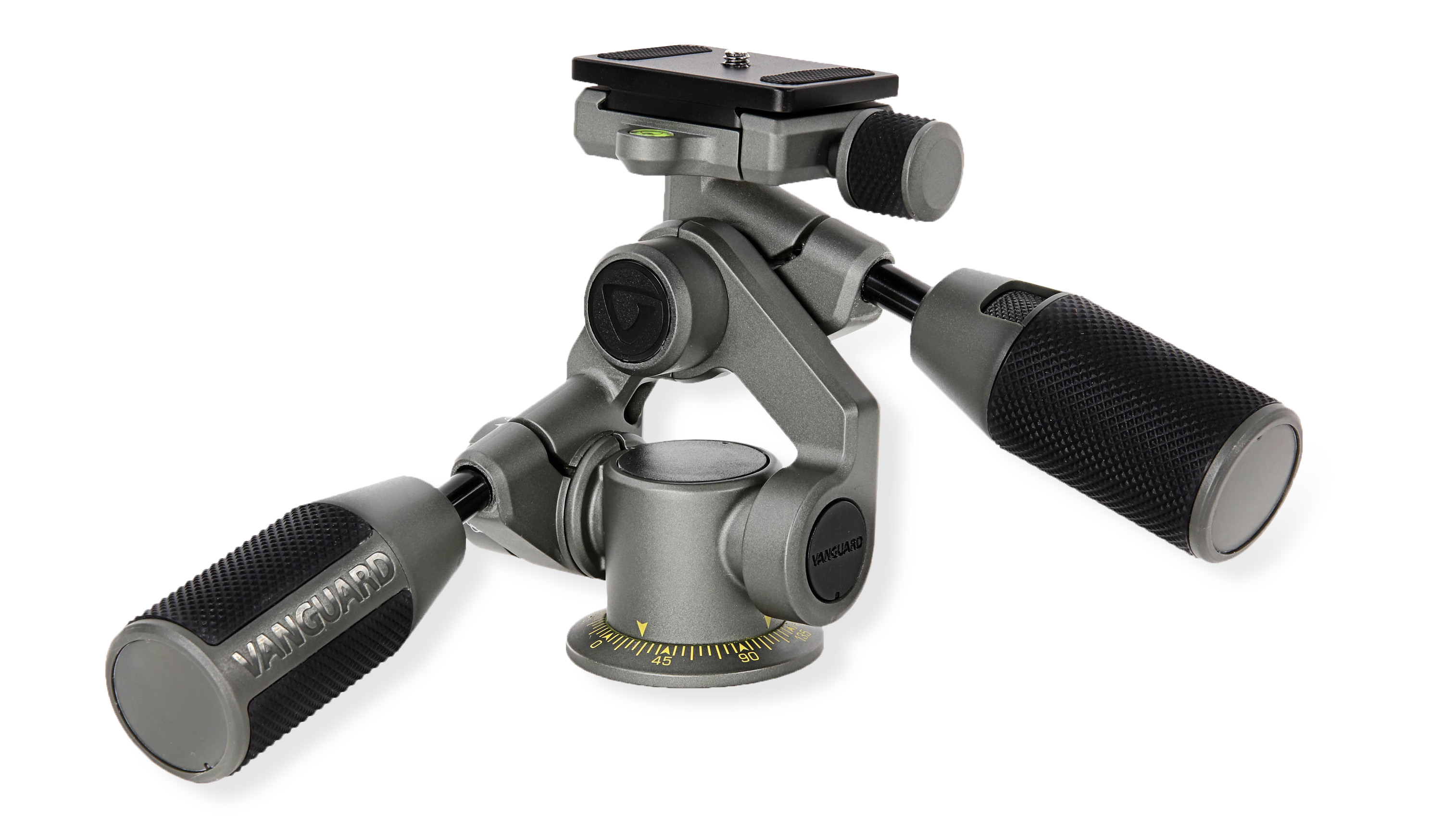
7. Vanguard Alta PH-32
Specifications
Reasons to buy
Reasons to avoid
Vanguard’s baby is just that, tipping the scales at a featherweight 680g. Consequently the rated max payload is a modest 5kg, falling short of the X-Pro’s 8kg capacity, but still a match for the much pricier Gitzo G2272M head. However, the Alta PH-32 doesn’t feel quite as controllable as more substantial rivals, so you’ll need to be very precise with the locking handles to modulate friction when making subtle angle adjustments.
The Alta PH-32’s crash diet also means there are only two locking handles, as the usual panning clamp is strangely absent. Instead, you get a selector that allows you to set the longitudinal tilt handle to lock only the tilt axis, or both tilt and pan simultaneously. It’s a neat trick that works well, although it’s not quite as convenient as dedicated panning adjustment.
Up top is a traditional Arca-Swiss style QR system. It’s a more versatile design than that used by Vanguard’s old PH-32 (non-Alta) head, but it lacks the same super-secure release procedure.
How to choose a pan and tilt tripod head
Here are a few key things to look out for when you're choosing a pan and tilt tripod head:
Tightness: You’ll want a stiffer setup when manoeuvring a big, heavy camera. Dedicated friction adjustment - or quality clamps that tighten progressively - will keep things under control.
Levels: Precision is the name of the game here, so the more bubble levels, the better, and be sure they’re visible once your camera is mounted. A degree scale on each axis can also be useful.
Effective quick release: Quick release mounts can sometimes be anything but. An ideal design should live up to the QR moniker, while incorporating an ergonomic safety catch to prevent a dreaded drop.
Compactness: Pan & tilt heads with collapsible handles are relatively rare, but thankfully most models will at least let you unscrew the handles for more streamlined transportation.
How we test tripod heads
When we look at heads like pan and tilt tripod heads, the main areas of testing are build quality and performance. Build quality encompasses things like the materials and how durable they are, as well as how fit for purpose each individual part is—something that is important for a mainstay piece of camera equipment.
The performance of a pan and tilt head is tested in real-world scenarios with a camera mounted on top. All the features are tested, particularly the panning and tilting actions for smoothness and reliability, and we also assess how easy it is to use different cameras in different configurations. Locking mechanisms are tried and tried again to make sure they are both robust and reliable.
FAQs
Which is better, a pan and tilt tripod head or a ball head?
Neither is quintessentially 'better' – it's all about what you're going to use it for. A pan and tilt head comes into its own if you are going to need to move your camera while on its tripod – if you're creating panning or vertically moving shots for video, or stitching panoramas or anything like that.
While the best ball heads will do a decent job, offering extensive movement in a compact body, they don't make it easy to do subtle angle adjustments, especially once you upgrade your camera and/or lens and the whole setup starts getting heavier. They also don't allow you to tweak horizontal and vertical pitch independently. For these kinds of more sophisticated adjustments, you need a pan and tilt or 3-way head.
They aren't perfect of course, as panning will tend to be slower, and shooting straight upwards will likely require you to remount your camera. They're also not as portable as standard ball heads.
What is the difference between panning and tilting
Both panning and tilting refer to camera movement – and the different quite simply is that panning refers to when the camera moves horizontally, and tilting to when it moves vertically.
Read more:
The best tripods
Best spotting scope tripods
The best gimbal heads
The best ball heads
The best pistol grips for tripods
The best panoramic tripod heads
Get the Digital Camera World Newsletter
The best camera deals, reviews, product advice, and unmissable photography news, direct to your inbox!
Ben is the Imaging Labs manager, responsible for all the testing on Digital Camera World and across the entire photography portfolio at Future. Whether he's in the lab testing the sharpness of new lenses, the resolution of the latest image sensors, the zoom range of monster bridge cameras or even the latest camera phones, Ben is our go-to guy for technical insight. He's also the team's man-at-arms when it comes to camera bags, filters, memory cards, and all manner of camera accessories – his lab is a bit like the Batcave of photography! With years of experience trialling and testing kit, he's a human encyclopedia of benchmarks when it comes to recommending the best buys.

